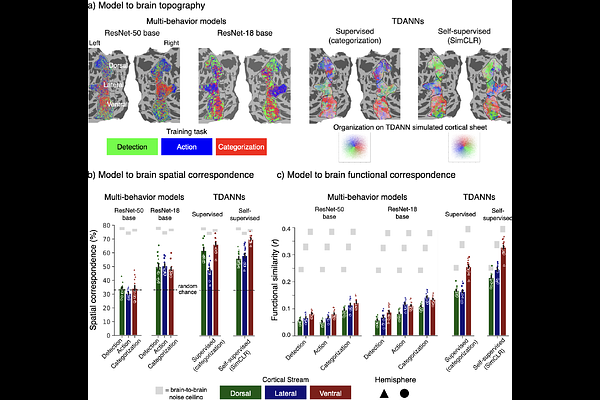A single computational objective drives specialization of streams in visual cortex

A single computational objective drives specialization of streams in visual cortex
Finzi, D.; Margalit, E.; Kay, K.; Yamins, D. L. K.; Grill-Spector, K.
AbstractHuman visual cortex is organized into dorsal, lateral, and ventral streams. A long-standing hypothesis is that the functional organization into streams emerged to support distinct visual behaviors. Here, we use a neural network-based computational model and a massive fMRI dataset to test how visual streams emerge. We find that models trained for stream-specific visual behaviors poorly capture neural responses and organization. Instead, a self-supervised Topographic Deep Artificial Neural Network, which encourages nearby units to respond similarly, successfully predicts neural responses, spatial segregation, and functional differentiation across streams. These findings challenge the prevailing view that streams evolved to separately support different behaviors, and suggest instead that functional organization arises from a single principle: balancing general representation learning with local spatial constraints.